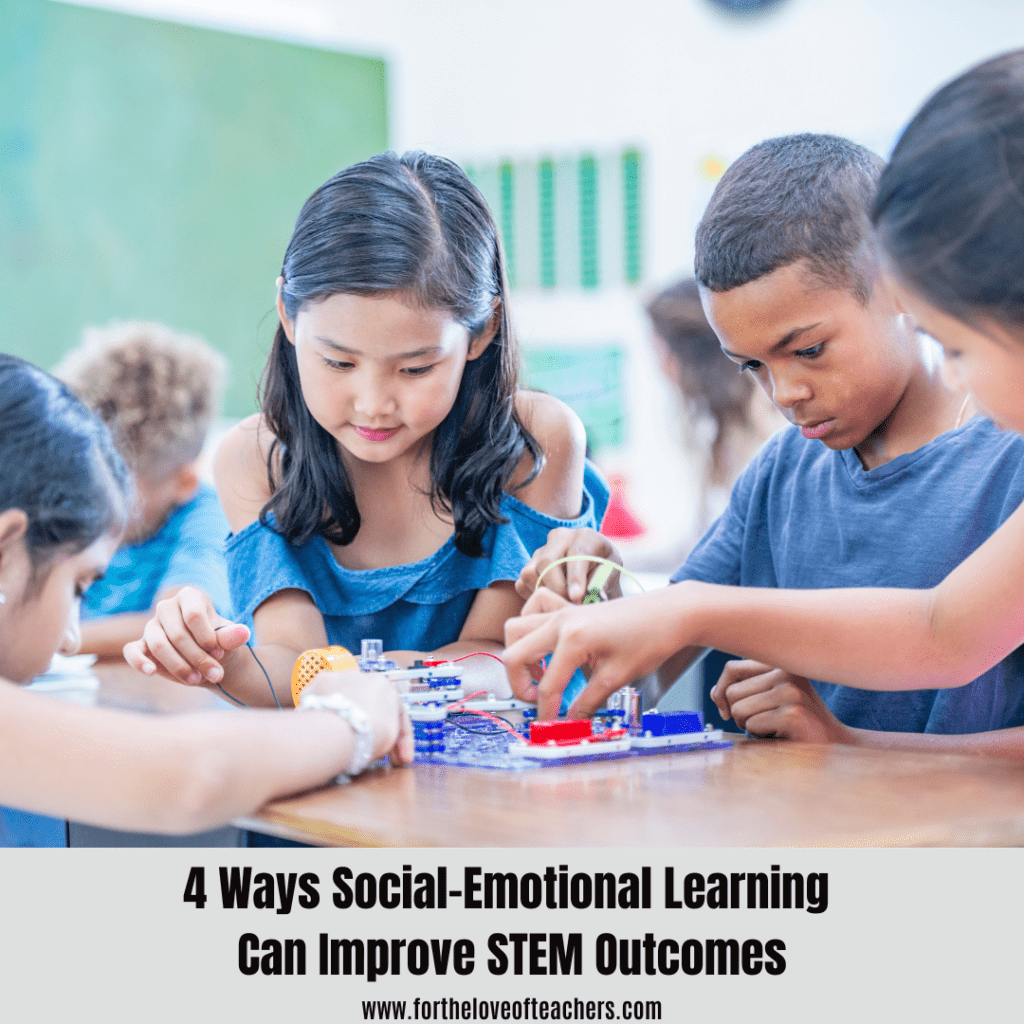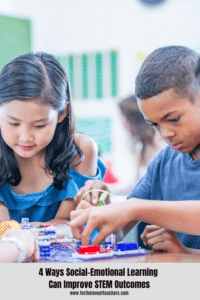The impact of education is dimensional. However, outcomes largely depend on the curriculum, programs, and co-curricular activities that schools follow. We can also agree that there is no better place to learn than school. Apart from bestowing knowledge, educational institutions play a vital role in shaping learners’ minds and personalities.
Most people think the way they think or develop perspectives on success and failure, depending on the environments and beliefs they were exposed to during their student life. The school environment also teaches students how to handle themselves and relate with others. Over the years, social-emotional learning (SEL) has become a focal point in school education, especially during pre-kindergarten, and from elementary to high school.
Social-emotional learning or SEL is a concept that focuses on imparting students the ability to comprehend emotions, and effectively manage their feelings and relationships with others, generally by showing empathy. SEL is associated with a range of benefits, and not only improves school learning environments but also enhances learners’ social skills outside school premises.
It generally helps students to acquire several social skills such as empathy, kindness, and relationship building among others. SEL skills can also help students learn how to manage their emotions or handle academic stress. Modern schools are becoming increasingly multicultural, providing a perfect platform for promoting SEL skills.
Diversity in schools allows students to learn how to interact with different types of people and learn more about their cultures, beliefs, and norms. This widens their perspectives about cultural diversity and also promotes mindfulness.
Social-emotional learning exhibits five core facets which include;
- Self Awareness
- Self-Management
- Social Awareness
- Relationship Skills
- Ideal Decision-Making
These can be explained below:
Self Awareness: Being self-aware is highly essential in life. It is generally the ability to understand one’s emotions, feelings, goals, and weaknesses. Self-awareness helps one understand their potential and limitations, which helps one to formulate growth and development pathways.
Self-Management: Self-awareness produces the competence of self-management, also known as self-regulation. When one is aware of emotions and feelings, they are able to tame themselves and think about the consequences of their actions. Self-management also helps in personality development. It generally helps one identify weaknesses and work on becoming the best version of himself.
Social Awareness: Social awareness is the competence that helps people become more aware of their interactions with others. It helps them put themselves in others’ shoes before acting. Social awareness is highly connected with several social behaviors like empathy, kindness, and service to others.
Relationship Skills: Life is more rewarding through quality relationships. People with quality relationships normally live a more fulfilled life than those with poor relationships. Relationship skills generally help individuals develop and maintain their social circles. In this way, they learn to communicate effectively, cooperate, and resolve conflicts which helps them grow.
Ideal Decision-Making: The competence of decision-making helps individuals make more informed decisions. Life is full of choices and they are normally associated with consequences. The ability to make ideal decisions helps regulate behavior and become more socially responsible.
On the other hand, STEM education, (Science, Technology, Engineering, and Mathematics), is a multi-disciplinary field that focuses on promoting technical knowledge in learners. STEM programs are designed to encourage discussion among students in order to promote critical thinking, problem-solving, and innovation abilities.
STEM education has gained incredible popularity in the present century due to the fact that the world is becoming more technologically driven. STEM education or activities are meant to enhance students’ interest in science subjects since these fields of study have the potential to meet the needs of the ever-changing world.
There is a range of STEM activities in almost every field of study and these can be performed during elementary, middle, and high school, and at advanced levels of education. STEM curriculum is commonly introduced to learners at an early age and it can be at home or in kindergarten. It is aimed at cultivating interest in science subjects and bringing about cognitive flexibility. STEM education has a wide scope but statistics indicate a considerable gap between boys and girls who pursue science studies.
The Link Between SEL & STEM
Effective learning occurs socially! There is no way students can effectively learn or apply knowledge while in isolation and this highlights the correlation between SEL and STEM. History shows how collaboration leads to significant breakthroughs. Immersive breakthroughs or innovations require dimensional input, generally from different people with multi-faceted perspectives.
In the ever-evolving world that we live in today, the need for creativity and innovation can’t be ignored. SEL skills can help cultivate a positive environment where learners can participate in deep learning, and research. When students are better positioned to learn from each other, it also improves the outcomes. So, how does SEL enhance STEM outcomes?
4 Ways SEL Improves STEM Outcomes
- Enhances Collaboration & Communication Skills
Social-emotional learning impacts the way students communicate and collaborate with others. Students with ideal communication skills are better positioned to air out their views on a certain concept and explain their perspectives profoundly. It should also be noted that social-emotional skills impact social behaviors.
Individuals with quality SEL skills happen to be good listeners. People who listen to others during discussions are keen to draw differences and correlations and come up with better ideas. Through that, teams can collaborate more easily and come up with better solutions.
In addition, SEL skills can help reduce academic stress among students. Through collaboration, students can reach out to their fellow students and obtain answers to intricate concepts and projects. Students are also better positioned to engage more with their fellow students and learn how to set SMART Goals and cultivate means to achieve them.
- Fosters Empathy
Innovations bring about a positive change in people’s lives, however, it’s always through understanding human problems. That’s how effective solutions are developed. Leaning on empathy during STEM education can enhance outcomes because students are better positioned to understand human pain and ineffectiveness to bring about better solutions.
Empathy positively impacts the design thinking process, a significant approach to creativity and problem-solving. Whether it’s through relying on personal experiences, research, or interviews empathy enables learners to listen to others’ perspectives.
On the other hand, when teachers are empathetic while delivering STEM programs, they help increase students’ interest in pursuing science subjects and STEM careers. Tapping into the power of empathy also makes STEM learning more meaningful and impactful.
- Impacts Mindset
SEL is highly about self-awareness where individuals become more informed of their potential, strengths, and weaknesses. When people are aware of their strengths, they set goals and work on achieving them. Co-joining with STEM education, SEL enables students to understand that learning is an ongoing process just like having to deal with different people in life.
Students are able to learn through mistakes, and failure and are motivated to pursue higher goals despite the limitations. This increases creativity and problem-solving skills which leads to innovations and breakthroughs.
Social-emotional learning also fosters a culture of learning to listen to others for fresh and different perspectives on a concept. Apart from influencing STEM outcomes, fostering a positive mindset is one of the best approaches to self-improvement.
STEM activities at times prove challenging to students and this may cause disinterest in science subjects. However, with perseverance and resilience students get to learn that despite limitations, they can work to improve themselves and their abilities.
- SEL Supports Cognitive Function
Understanding, managing emotions, and cultivating quality relationships, help students collaborate and communicate better. It also brings about cognitive flexibility where students can switch between tasks and cope with classroom anxiety.
Inventions illustrate the power of collaboration and in STEM education, SEL influences STEM outcomes. Students are able to better communicate, manage emotions and interact with others for better project outcomes.
To conclude, exploring the link between SEL and STEM education may not be definite to many. However, understanding the connection and combining both concepts can help improve STEM outcomes. Social-emotional learning fosters emotional and relationship competencies that help students grasp knowledge better in all environments. These competencies also help learners to reach their full potential.
 About the Author: Jessica Robinson finds her peace in penning down intriguing and captivating blogs for her readers. So, she has been creating the finest pieces of content for over a decade while working at ‘The Speaking Polymath’.
About the Author: Jessica Robinson finds her peace in penning down intriguing and captivating blogs for her readers. So, she has been creating the finest pieces of content for over a decade while working at ‘The Speaking Polymath’.
How Benji The Bear Supports Social-Emotional Learning in the Classroom
How Playgrounds Can Boost Social-Emotional Development in Children

Christine Weis is a passionate educator, classroom management coach, wife, and mom of two busy boys. She enjoys teaching, writing, and creating resources for teachers.







Leave a Reply